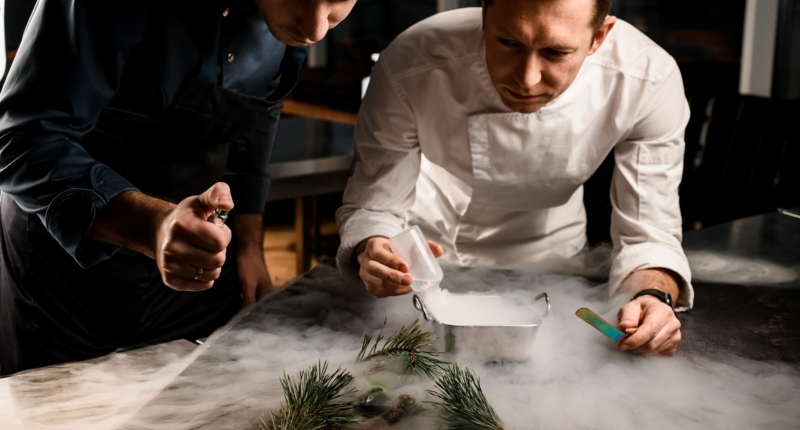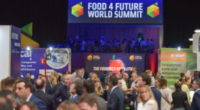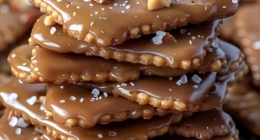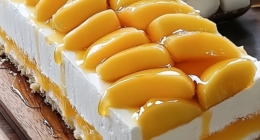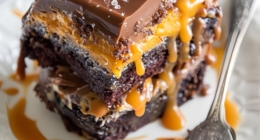Molecular gastronomy is a culinary technique that seeks to transform the physical state and appearance of food in a playful way. The technique has its roots in the 15th century, where chefs mixed chemistry and cooking in their kitchens. The culinary practices of the old had a connection to two scientific disciplines, namely medicine and alchemy. The cooks of the early 15th century looked to combine all this knowledge into their dishes, which included dangerous experiments such as stuffing a chicken with sulfur and quicksilver. The art of transforming food has endured through the ages, and alchemical formulas were often referred to as recipes, with alchemical texts containing authentic culinary recipes. Despite the dangerous nature of these experiments, alchemists and cooks alike continued to explore the possibilities of combining science and cooking.
The Explosive 15th Century Roots of Molecular Gastronomy
Molecular gastronomy, a whimsical blend of food art and chemistry, is all about transformations. From basic ingredients such as potatoes, herbs, and mushrooms to foams, gels, and even smoke, molecular gastronomy can transform them all into something revolutionary. Chef Ferran Adrià, who put molecular gastronomy on the map in 2003 with his work at El Bulli, took this concept to the next level by turning white beans into foam.
However, the roots of this modern culinary technique go back to the 15th century, where chefs mixed chemistry and cooking in their kitchens, treating them like laboratories. Even though the term “molecular gastronomy” was coined in 1988 by Nicholas Kurti and Herve This, the forefathers of this specific field, traces of this subject can be found in 15th-century manuscripts, where recipes took on the role of alchemical formulas.
The culinary practices of the old had a connection to two scientific disciplines: medicine and alchemy. Medieval medicine was based on our understanding of the body’s four “humors”: blood, phlegm, yellow bile, and black bile. Physicians aimed to balance these finicky humors, and the patient’s diet became a means to help even out the humors. Therefore, some cooks began mixing medicinal science into their dishes, ensuring their cooking would favor their lord’s health.
The once-celebrated science of alchemy, a study on how to transform matter, was another influence on culinary practices of the 15th century. Not to be confused with witchcraft, alchemy was a respected science in medieval times, more akin to our current respect for chemistry. Many alchemical students were devoted to learning how to transform ordinary metal into gold, but the alchemical discipline focused on all forms of “transmutation,” including transforming the sick into the healthy and the old into the young.
In conclusion, molecular gastronomy is an exciting culinary technique that has its roots in 15th-century alchemy and medicinal science. Although the term was not coined until much later, the mixing of chemistry and cooking has been around for centuries. Today, chefs continue to innovate and transform simple ingredients into culinary masterpieces that challenge our perceptions of taste and texture.
The Explosive Collaboration of Alchemy and Cooking in the 15th Century
The 15th century saw the fusion of two seemingly disparate fields – cooking and alchemy – into a whimsical and often dangerous experiment. The goal of alchemy was to transform matter, including the transmutation of ordinary metal into gold. In contrast, molecular gastronomy seeks to transform the physical state and appearance of food in a playful way.
The link between these two fields can be traced back to medieval medicine, which was based on the understanding of the body’s four humors. Diet became a means of helping even out these humors, and some cooks began mixing medicinal science into their dishes. Additionally, alchemy was a respected science in medieval times and focused on all forms of “transmutation,” including transforming the sick into the healthy and the old into the young.
“The Vivendier,” a French cookbook from the early 15th century, is an excellent example of the combination of these two fields. Although it is most famous for its liberal use of butter, the book contains a deadly chicken recipe that involved stuffing the cavity with ground sulfur and quicksilver (mercury). The resulting dish was supposed to produce a high-pitched scream as the gases escaped, but it was undoubtedly poisonous and combustible.
Despite the dangerous nature of these experiments, alchemists and cooks alike continued to explore the possibilities of combining science and cooking. In fact, alchemical formulas were often referred to as recipes, and alchemical texts often contained authentic culinary recipes. An Italian alchemical text, for example, contained both a recipe for wine and instructions on how to make a dying horse look fat and beautiful.
While molecular gastronomy has come a long way since these questionable alchemical experiments, it’s fascinating to see how the art of transforming food has endured through the ages. Even in the 15th century, cooks were eager to push the boundaries of what was possible and transform simple ingredients into something extraordinary.
Don’t miss interesting posts on Famousbio

